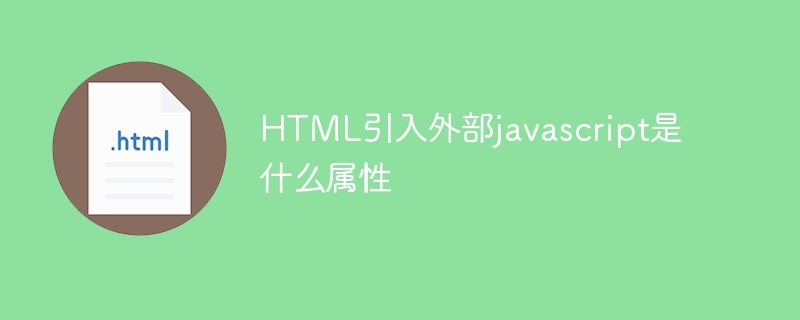
HTML introduces external javascript through the src attribute of the script tag, which specifies the URL of the external script file; the syntax is "

The operating environment of this tutorial: windows7 system, HTML5&&javascript version 1.8.5, Dell G3 computer.
HTML introduces external javascript through the src attribute of the script tag.
<script> tag is used to define client-side scripts, such as JavaScript. </script>
The script element can either contain script statements or point to an external script file through the src attribute.
Sometimes, we need to run JavaScript in multiple pages of the website. Instead of writing the same script over and over, just create the JavaScript in a separate file, save it with a .js suffix, and reference that file using the src attribute in the <script> tag. </script>
Syntax
<script type="text/javascript" src="value"></script>
| Value | Description |
|---|---|
| URL | The URL of the external script. Possible values are:
|
<!DOCTYPE html> <html> <head> <meta charset="utf-8"> </head> <body> <script type="text/javascript" src="demo.js" ></script> </body> </html>

Note:
Once the <script> tag uses the src attribute, it is used as a reference to an external file rather than inside the editing page. elements of the script. In other words, using src indicates that the element is suitable for referencing an external Javascript file and is not intended to insert a Javascript script into the page. <p></p>This shows that it should not and is not necessary (and useless) to insert code in the <script> tag that uses the src attribute. This can cause unpredictable results and, at least in most browsers, has no practical effect. If you add the following code to the example in this article: <p><div class="code" style="position:relative; padding:0px; margin:0px;"><pre class="brush:js;toolbar:false"><script src="demo_script_src.js"> document.write("这个输出的内容来自本文件的 Javascript。"); </script></pre><div class="contentsignin">Copy after login</div></div> It may parse the Javascript file referenced by the src attribute normally, but it may not execute any code edited directly within the <script> tag. Obviously, the many special properties of <script> (for example, some of its attributes can only be used for external files) determine that it is impossible to normally execute the referenced external file while taking into account the directly edited content in it. <p>[Related recommendations: <p>javascript learning tutorial<a href="//m.sbmmt.com/course/list/17.html" target="_blank">]<strong></script>The above is the detailed content of What attribute does HTML introduce external javascript?. For more information, please follow other related articles on the PHP Chinese website!